Last-Minute NYC Holiday Gift Guide 🎁
We’ve created a holiday gift guide with presents for the intrepid New Yorker that should arrive just in time—


The inaugural episode of The Untapped New York Podcast was a dive into my favorite subject of all time: New York City’s pneumatic tube mail system. One of the highlights of this exploration was getting to see what I call the “holy grail” of pneumatic tube mail remnants: the six pneumatic tube flanges coming out of the wall in the basement of the Old Chelsea Post Office. They are the last known remnants of the pneumatic tube mail system in New York City.
The Old Chelsea Post Office is located at 217 W. 18th Street. The brick building was completed in 1937, financed through an Act of Congress as a Works Progress Administration project under President Franklin D. Roosevelt. At that time, James. A Farley was the Postmaster General. Farley’s name would go on the General Post Office next to Penn Station, now recently renovated and renamed Moynihan Train Hall. The Old Chelsea Post Office was also known as “Station O” and was placed on a list of stations marked for potential sale back in 2011. Fortunately for us, it remains an active postal station.
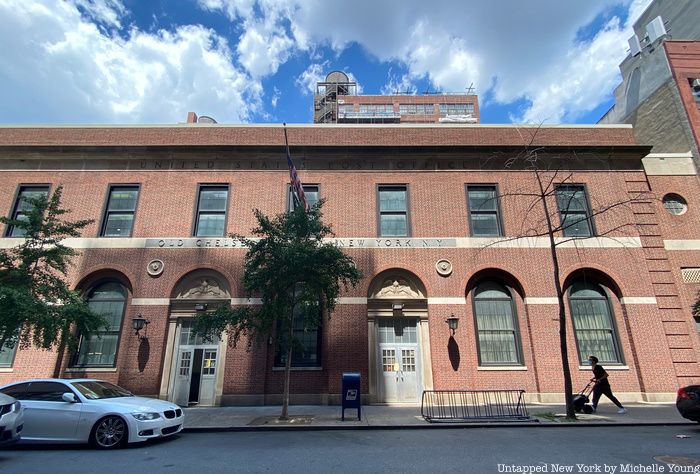
The mail trucks at the Old Chelsea Post Office leave from arched brick entranceways along 18th Street and you’ll regularly see mail trucks going in and out. While the interior of the post office is not necessarily ornate, a certain level of care was paid to the design. The floor features multiple types of stone, laid out in rectangular sections that help delineate the space. A geometric, meander pattern near the ceiling rings the lobby, much like a frieze on an ancient Greek or Roman temple. Above the doorways are bronze bas relief art works by Woodstock-based artist Paul Fiene showing woodland scenes. One is entitled “Deer” and the other “Bear.”
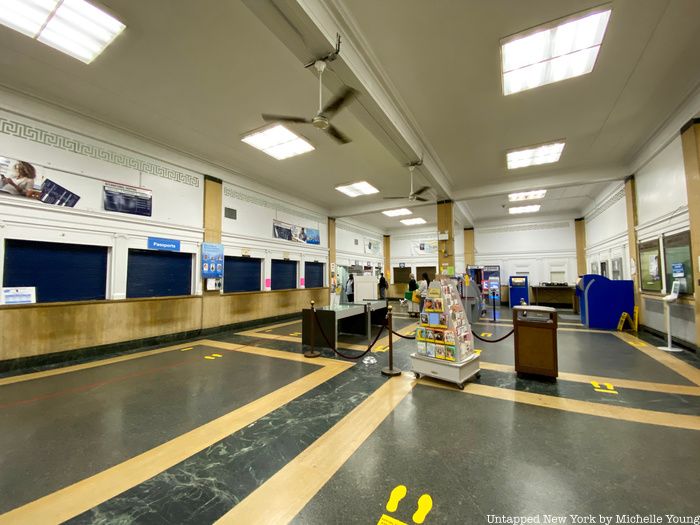
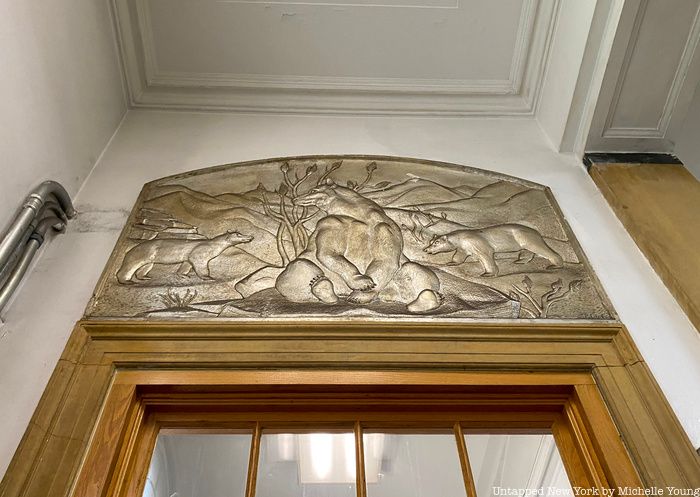
The pneumatic tube remnants are located pretty deep in the post office. It’s not in a publicly accessible area, but I was taken down into the basement, through a cage full of janitorial supplies and into a narrow hallway filled with forgotten office supplies. At the very end were six flanges coming out of the wall.
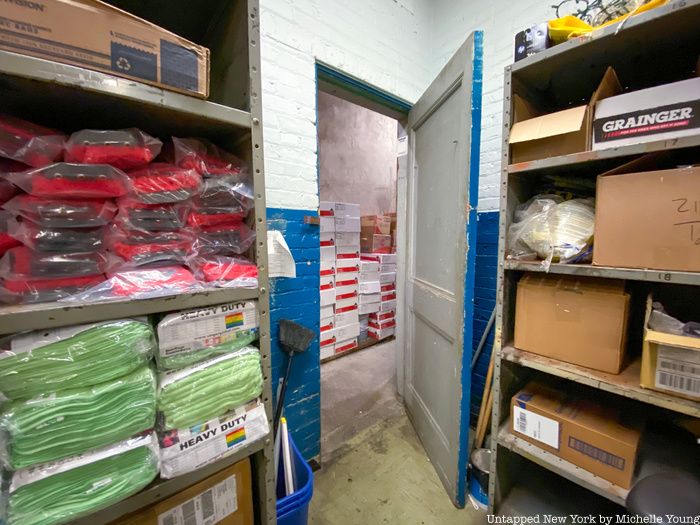
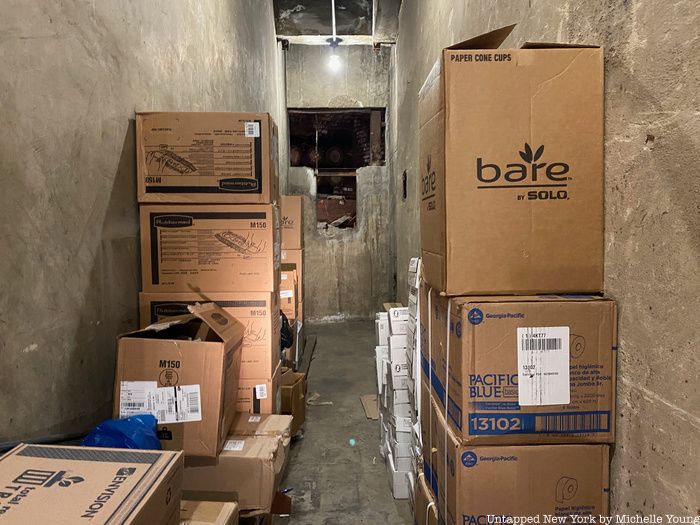
The pneumatic tubes are now blocked off with concrete but Xavier C. Hernandez a Communications Specialist with the US Postal Service explained to me how the set up might have once been. The tubes would have come in from under the street, continuing from this point in the wall leading out to a larger area where the mail would be processed by “Rocketeers,” the postal operators who sent and received the pneumatic tube canisters.
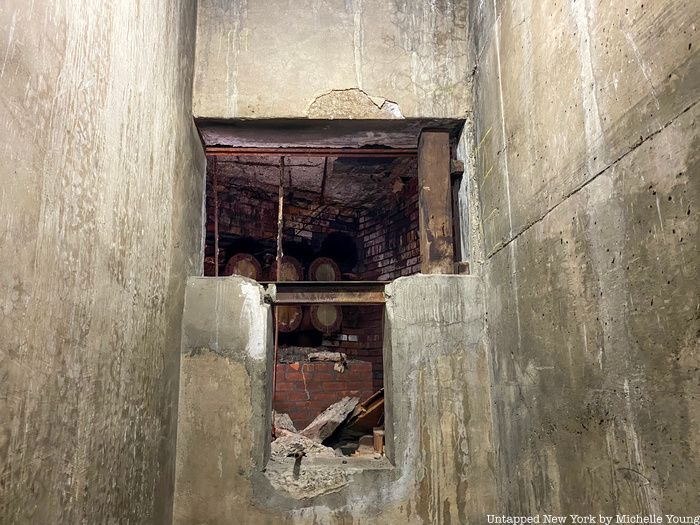
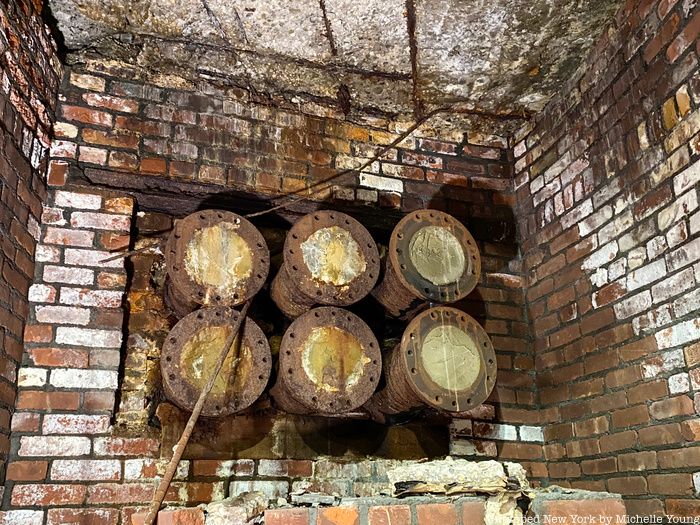
As you can see in the historic photograph below, taken in the James A. Farley Post Office, the canisters would shoot out onto a tray — you can see the man in the overalls holding onto one canister. Each canister would be labeled with its final destination, so if a canister was not intended for this post office, it would be sent back into the system and on its way.
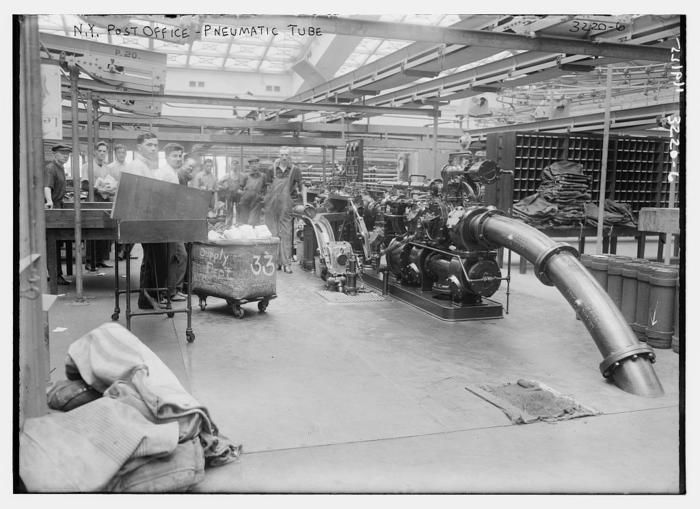
Pneumatic tubes in the James A. Farley Post Office, circa 1914-15. Photo from Library of Congress
The pneumatic tube mail system in New York City was about the length of a marathon, connecting two dozen post offices going from downtown Manhattan to Harlem and back down, with cross town tubes between the main post office at 34th Street and Grand Central. Not limited to the island of Manhattan, there was a pneumatic mail stop in Brooklyn and one in the Bronx that would send subway sandwiches all the way downtown. Taking the idea of express mail to its fastest possible conclusion, regular mail would often arrive same-day. It only took 4 minutes to send mail from Grand Central to the main post office on 34th Street. From the main post office, it would take just 16 minutes to get down to Wall Street. At the peak of the system, about 1/3 of all first class letters went through these tubes. In the 1950s, as the system was coming to a close, it still carried 55% of all New York City mail.
You can read hear more about the pneumatic tube mail system in New York City in The Untapped New York Podcast, or read more about them here!
Subscribe to our newsletter